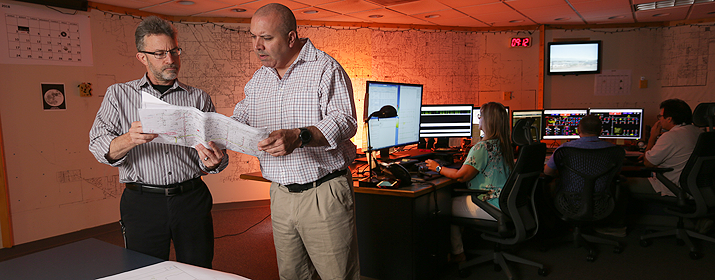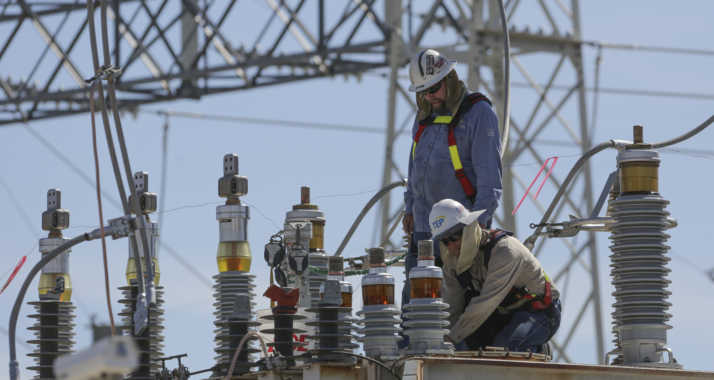
When monsoon storms mount their annual assault on Tucson Electric Power’s local grid, the Map Room is where the company’s system controllers collaborate with crews to plan their response.
TEP’s system control center gets its name from the detailed, hand-drawn street and circuit maps mounted on its walls. Though the room lacks windows, banks of computers provide a clear view of TEP’s local distribution system.
The room is staffed around the clock by a team of approximately 15 TEP employees who monitor the quality and delivery of power and manage service disruptions with the goal of restoring power quickly and safely.
Years ago, distribution operators pushed pins into wall maps to note the areas affected by outages to help diagnose problems. Now, TEP primarily relies on data from its Supervisory Control and Data Acquisition (SCADA) system.
“SCADA provides the accurate and real-time status of breakers, meters and other equipment,” explains Lonnie Chapman, Manager of Transmission & Distribution Control. “It feeds information to our Outage Management System (OMS), which shows us the outage area along with a likely cause.”
Map Room personnel also rely on customer reports of outages, field assessments, 911 notifications and information from meters to diagnose issues. “We compile and assess all of this information and then dispatch repair crews to mitigate the issue and restore power,” Chapman said.
The Map Room uses its Storm Plan, which is updated annually, to manage service disruptions due to severe weather.
When an outage occurs, information from the OMS is uploaded to the outage map on tep.com. Details about the outage boundaries, cause and estimated restoration time are updated every five minutes if there is a change in status. Customers also can view and report outages using TEP’s mobile app.
Once Map Room personnel learn of a potential outage, supervisors send a troubleman to the outage location to assess safety risks and secure the area until field employees arrive to conduct repairs. System supervisors and field crews work to restore electric service as quickly as possible by rerouting power to customers, if possible. This also allows employees to isolate the circuit and complete repairs.
The more complicated the problem, the longer it takes to resolve. If the system has incurred extensive damage in multiple locations, restoration might require coordinated efforts with multiple departments.
“Weather is a big factor that can delay our work,” said Chapman. “High winds damage poles and lightning strikes blow fuses. Flooding can wash out roads that our crews need to access to make repairs. We also must arrange for underground utilities to be marked before we start digging.”
When multiple outages occur, Map Room personnel prioritize repairs to restore service to the largest number of customers as quickly as possible. Public safety hazards, such as downed wires, are given first priority, followed by restoration of power to critical service providers like hospitals and police and fire stations. Crews work continuously until all power is restored.
“Heading into storm season, we focus on the availability of equipment, materials and personnel,” said Sam Rugel, TEP’s Director of System Control and Reliability. “Crews may be held over or called in to work extra hours so that we ready and able to respond.”
“A lot of people work together to get the lights back on,” he continued. “And all of these activities are coordinated through the Map Room.”






